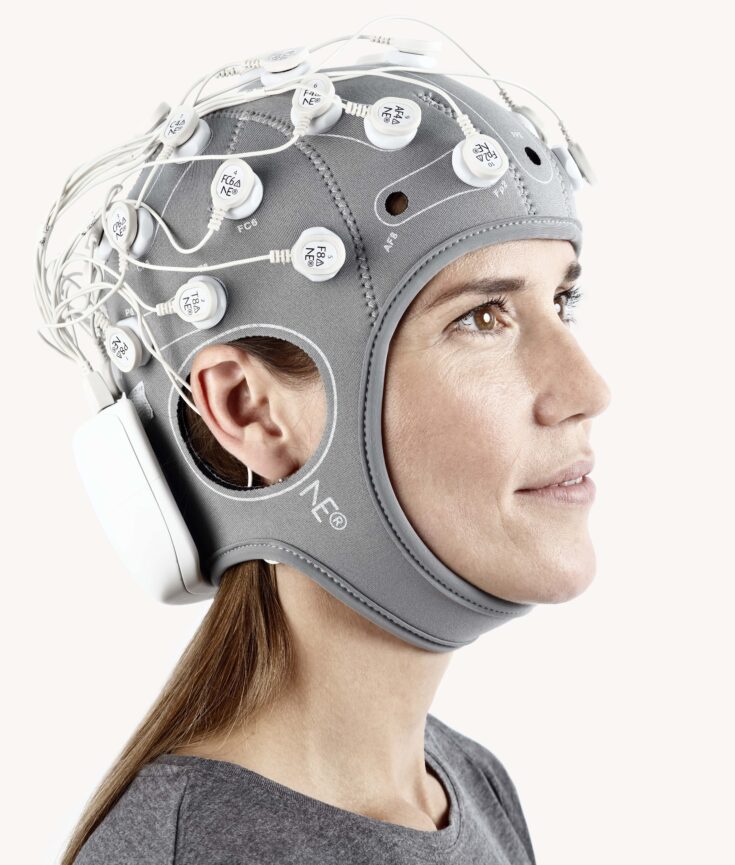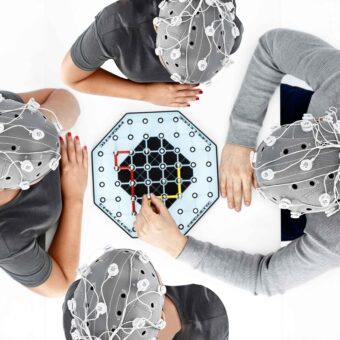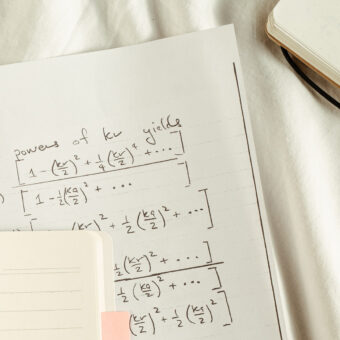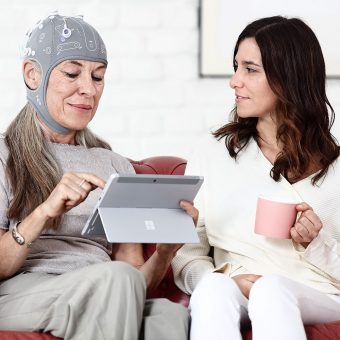Recently, loop systems that combine neural monitoring and tES are receiving huge interest in the non-invasive brain stimulation field. Traditionally tES has been applied in a rigid fashion in which the electrode position and stimulation intensity were pre-defined before the stimulation session and applied in the same manner across subjects. This procedure ignores for example inter-subject variations in brain morphology and physiology. Loop techniques aim to reduce these inter-subject variabilities through the adaptation of the stimulation to the individual’s ongoing neural activity. Loop techniques rely on the hypothesis that brain state is a decisive factor of plasticity-induced effects produced by the stimulation, and thus determines the subject’s response to the stimulation.
Two types of loops exist: open and closed. In open-loop systems, also known as non-feedback systems, stimulation parameters such as amplitude, target area, frequency, or duty cycle, are individually tuned before the stimulation. These parameters can be adjusted based on treatment results, the patient’s condition, or physiological assessments [1, 2]. For example, the stimulation frequency of tACS (transcranial alternating current stimulation) can be adjusted to the individual’s peak alpha frequency measured via EEG, or the stimulation target area can be changed if a patient does not respond as expected to a tES-based rehabilitation therapy.
In closed-systems, the patient’s neural activity is monitored and analyzed in real-time with the objective of tuning the stimulation parameters based on relevant features. For example, the tES amplitude can be adapted to the measured neural patterns or the phase of the tACS sinusoidal stimulation can be modified online in order to be time-locked to a specific brain rhythm. However, the definition of closed-loop can be controversial. For example, Bergmann states that for a system to be considered closed-loop in the strict sense, it should continuously monitor a specific brain state and adjust the stimulation to achieve changes in that specific brain state. Therefore, if the loop does not affect the monitored brain state, it shall be considered as open. Bergmann compares closed-loop systems to thermostats in which measured temperature is regulated by switching on and off radiators in order to reach and maintain a pre-defined level.

Many examples of tDCS (direct current stimulation) closed-loop systems exist – let’s have a look at some examples. Leite showed the feasibility of building a closed-loop system in which the stimulation was triggered by EEG power. In this case, they monitored two well-known EEG rhythms: alpha and beta. The stimulation was triggered when a beta increase of 200% was accompanied by an alpha decrease of 50%, with respect to reference levels measured in a baseline before the stimulation session. Jones investigated the effects that closed-loop driven tACS during sleep has on memory consolidation, as sleep is crucial to consolidate the information learned during the day. In this case slow-wave sleep (SWS) patterns were monitored and sinusoidal tES delivered in phase in frontal electrodes and out of phase at bilateral mastoids. Results showed an improvement of memory capabilities of participants undergoing closed-loop sessions. Another example of closed-loop applications is the one proposed by Li. They designed a closed-loop system capable of detecting early drowsiness in drivers by measuring alpha rhythm in the EEG, and head movements using a gyroscope. When drowsiness was detected, the system automatically launched a tDCS stimulation to awaken the patient and reduce the risk of accidents. These are just a few examples of potential uses of closed-loop technologies that we believe will revolutionize the field of brain stimulation in the coming years. We expect that individualization of stimulation by employing closed- and open-loop systems will significantly improve therapeutic efficacy in the clinical field.
Starstim is the perfect device to build closed-loop applications. Its ability to individually configure its electrodes for sensing EEG or stimulation, and the added feature of measuring EEG during tDCS, makes Starstim the ideal device to develop such real-time systems. For more information about simultaneous EEG monitoring during tES, you can read our white paper. You can find an overview of other Starstim applications here.
Luminous is an EU project that explores and alters consciousness in the electrical brain. Neuroelectrics’ partner Starlab has developed in Luminous a closed-loop application to promote responsiveness in patients with disorders of consciousness using Starstim with 20 channels. We use Starstim’s software (NIC) to stream synchronized EEG in real-time via the Lab Streaming Layer protocol (LSL). The application we have developed analyzes the EEG to calculate online the ongoing vigilance and attention levels of patients in minimally conscious state (MCS). The application remotely commands Starstim software via MatNIC to launch dorsolateral pre-frontal cortex stimulation (DLPFC) at either high, low, or random levels of vigilance. Results are promising and important recovery of consciousness levels has been reported! Stay tuned for more news about this study!
- Ghasemi, P., Sahraee, T., & Mohammadi, A. (2018). Closed-and open-loop deep brain stimulation: methods, challenges, current and future aspects. Journal of biomedical physics & engineering, 8(2), 209.
- Rosin B, Slovik M, Mitelman R, Rivlin-Etzion M, Haber SN, Israel Z, et al. Closed-loop deep brain stimulation is superior in ameliorating parkinsonism. Neuron. 2011;72:370-84. doi: 10.1016/j.neuron.2011.08.023. PubMed PMID: 22017994.
- Bergmann, T. O. (2018). Brain state-dependent brain stimulation. Frontiers in psychology, 9, 2108.
- Karabanov, A., Thielscher, A., & Siebner, H. R. (2016). Transcranial brain stimulation: closing the loop between brain and stimulation. Current opinion in neurology, 29(4), 397.
- Leite, J., Morales-Quezada, L., Carvalho, S., Thibaut, A., Doruk, D., Chen, C. F., … & Fregni, F. (2017). Surface EEG-transcranial direct current stimulation (tDCS) closed-loop system. International journal of neural systems, 27(06), 1750026.
- Jones, A. P., Choe, J., Bryant, N. B., Robinson, C. S., Ketz, N. A., Skorheim, S. W., … & Heinrich, M. D. (2018). Dose-dependent effects of closed-loop tACS delivered during slow-wave oscillations on memory consolidation. Frontiers in neuroscience, 12.
- Martens, G., Barra, A., Carrière, M., Soria-Frisch, A., Ruffini, G., Ibáñez, D., … & Thibaut, A. (2019). Closed-loop application of tDCS to promote responsiveness in patients with disorders of consciousness. Brain Stimulation: Basic, Translational, and Clinical Research in Neuromodulation, 12(2), 459.
- Li, G., & Chung, W. Y. (2017). Combined EEG-gyroscope-tDCS brain machine interface system for early management of driver drowsiness. IEEE Transactions on Human-Machine Systems, 48(1), 50-62.
- http://www.luminous-project.eu/



